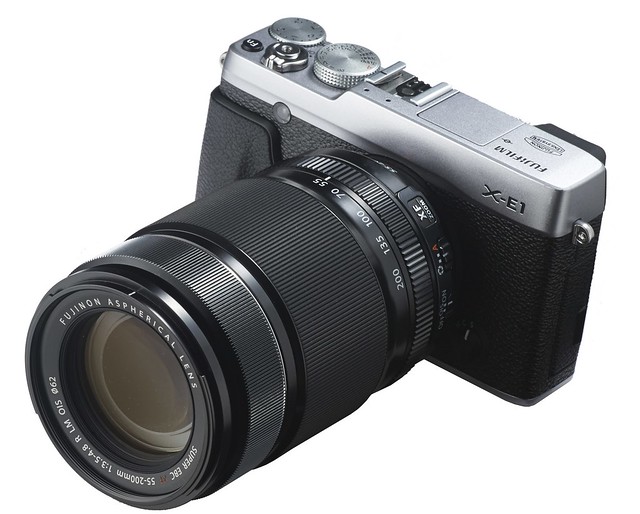First image samples with the Mitakon 35mm f/0.95

DC.watch (google translation here) posted a short test and some image samples taken with the Mitakon 35mm f/0.95 lens. The lens can be bought on [shoplink 11236 ebay]eBay (Click here)[/shoplink].

DC.watch (google translation here) posted a short test and some image samples taken with the Mitakon 35mm f/0.95 lens. The lens can be bought on [shoplink 11236 ebay]eBay (Click here)[/shoplink].
image courtesy: dave kai piper
– “During a recent trip to the USA, Sam Krisch arranged a trip to a GORGEOUS old theatre. This is a little story about the fundraising project to restore it.” Almost every image you’ll see has been taken with the X-PRO1. The rest with a [shoplink 11193]D800[/shoplink]. Read the article, look at the video and see the beautiful images here.
X100S
[shopcountry 10075]
– Was Zack Arias exaggerating when he said that the X100S is the best camera he has ever owned? According to kevinmullinsphotography no! “The Fujifilm X100S is a wonderful camera, and I genuinely mean that. Zack Arias said it is the best camera he has ever owned and you know what, I think I may well agree with him.” Read why here.
– It’s a mere specs comparison, but if you are interested in it, see how the X100S deals against the brand new ultra compact, cheap APS-C Ricoh GR (check price and specs at BHphoto and Adorama). The winner is the X100S, but check it out by yourself here. Over at mirrorlessrumors you can read a comparison of the GR against the rest of the world high end compact cameras (including X-PRO1).
– A few words and a lot of images… but pay attention, “the X100s’ review LCD shows a pretty bad representation of the actual photograph. So don’t delete in camera immediately! Wait till you import them onto your computer!” Read danielkcheung’s review here.
– A X100S vs [shoplink 11210 ebay]OM-D[/shoplink] here at mirrorlessons.
– X100S photoreview here. They say that the X100S is “good for landscape photography, group portraits, street photography, (especially scenic shots) shooting in low light levels travel (provided you can tolerate the fixed focal length lens and not so good for shooting sports and action, close-up shooting and shooting movies.” Check it out here.
– confessionsxl posted his X100S video review here. Take a look at it!
X20
[shopcountry 10267]
– “Soft background with the X20” here at thedigitalstory.
– Japanese dc-watch review here (translated version).
– focus-numerique posted his full X20 review here (translated version)
X-E1
[shopcountry 10259]
You’ll need some time to read the comprehensive X-E1 review of imaging-resource here. They compare it with many other cameras, like the [shoplink 11360]GH3[/shoplink], [shoplink 11210]Olympus OM-D EM-5[/shoplink] and [shoplink 10261]X-PRO1[/shoplink] at different ISO settings. From the conclusions:
“Our photos, however, looked wonderful — with lots of resolution and detail (partly due to the absence of a low-pass filter). And thanks to the X-Trans sensor technology, there was also a low incidence of moiré despite the lack of the LP filter. While we didn’t expect much from the XF 18-55mm f/2.8-4 kit lens — which is the first zoom for Fuji’s X-series interchangeable lens cameras — it produced images with impressive sharpness and professional looking background blur (bokeh), which is great for portraits. The X-E1 also really stood out against the competition in low-light situations and higher ISOs (especially in the 1,600 to 3,200 range). The camera’s operational performance was a mixed bag, however, with some full AF shutter lag and shot-to-shot speed issues. The X-E1 was also painfully slow to wake up from sleep mode, which resulted in some missed candid shots. Bottom line though, there’s not a lot to complain about with the X-E1, especially considering its more budget-friendly price tag.”
image courtesy: imaging-resource
X-PRO1
[shopcountry 10261]
– Grimmy vs Plummy: “Love your site! Always on it to check up on your latest rumors. I use my X-Pro1 everyday practically and started my own little challenge with my Fiance.. She owns the OM-D and started our own challenge that lets people vote who takes better shots. If you have time please check it out here. Keep up the great work with your site!”
XF1
[shopcountry 11362]
– Head to head: XF1 vs X10 here.
– cameras.about.com review here: “The Fujifilm XF1 is one of the more interesting looking cameras currently on the market. Not only does the synthetic leather covering give the XF1 a unique design, but its boxy shape and aluminum trim contribute to a retro look for this camera”
– Pcmag review here. “The Fujifilm XF1 is a neat retro-look compact camera with sharp optics, but its light-gathering capability diminishes as you zoom.“
This friday the X-pert corner article is replaced by a Jan Vogelaar review. Please continue to support Rico’s great work and purchase his book “Mastering the FUJIFILM X-Pro1” (Kindle Edition) (Apple iBook Store) (German version)”.
A review by Jan Vogelaar (author of various books like “Contarex, Contax G & Leica M Lenses Guide to Digital Imaging on the Fujifilm X-Pro1” [ebay (click here) or at camerabooks (click here)]
The development of photographic tele-lenses cannot be complete without Carl Zeiss AG. Today we speak about digiscoping on digital camera’s, however do you know, even the word “digiscoping” did not exist, but Carl Zeiss already in the nineteen fifties offered the solution for connecting and using a monocular on a photo camera. The longest tele-lens Zeiss offered as early as 1958 was the 4.0/250 mm Sonnar. The mounting of an 8 x 30 B monocular on the Contarex camera and lenses was offered in 1960 and creates with the 4.0/135 mm Sonnar a 1080 mm tele.
The Camera
The Fujinon XF lenses are newly designed for the APS C sensor. Al other lenses in my book however are originally designed for film. Many new lenses for the digital cameras today are a modification of film design lenses.
The scores for the lenses are given on a scale of 1 to 10 for sharpness and brilliance, 10 is best. For Color fringing and color aberration the score is also on a scale of 1 to 10. 10 equals totally absent.
All material is produced in a timespan of about 2 hours and no post-processing for aberrations or sharpness is performed. All files are .jpg from Photoshop and/or the Fuji .jpg in camera engine.
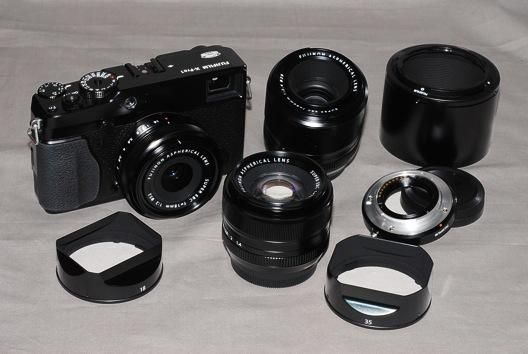
The Fujinon XF lenses are newly designed for the APS C sensor. All other lenses in the book are originally designed for film. Even many new lenses on the digital market today are a modification of film design lenses.
The Monoculars and the Adapters
Zeiss offered in 1960 the 8 x 30 B monocular which was mountable on the 50 mm Contarex Planar & Tessar and on the 4.0/135 mm Sonnar lens by means of a ring (number 20.1633) fitting into the ø 49 mm filter mount and to the monocular with a ø 27 mm thread. Later in 1969 Zeiss introduced a Contarex B56 ring (number 20.1642) fitting on the 8 x 30 B monocular with the same ø 27 mm screw.
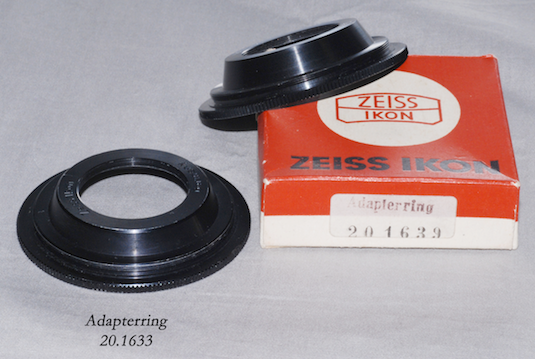
For the picture above: The left ring (20.1633) protrudes 7.6 mm into the lens mount and does not touch the front lens of the 4.0/135 mm. However the ring at the right (20.1639) protrudes 9.9 mm into the mount and is not suitable anymore for the 4.0/135 mm. It will hit the front lens! The B 56 ring (20.1642) not pictured here) will fit all Contarex lenses.
In order to show you the shooting point you see here the 50 mm standard lens photograph.
The Contarex Monocular 8 x 30 B combinations in this article
The lens/monocular speed is determined by the monocular front lens diameter only! The distance setting for the camera lens is set at infinity. Focusing for the combination is done with the monocular’s focusing. Of course you will need a tripod, the more weight creates the better stability. For the release it is best to use a cable or the self-timer. Heavy wind or traffic can be quite disturbing, a minimal vibration is noticeable immediately!
Originally in 1960 Zeiss introduced a prism monocular, later the strait type monocular came available. I have tested the Zeiss monocular, but any monocular that mounts well will do the job.
Left to right: the [shoplink 10259]Planar 2.0/50 mm[/shoplink], the Blitz Planar and the 4.0135 Sonnar, all with ring & monocular.
The combination of the Contarex 3.5/115 Tessar on the bellows looks a bit odd but is fine.
The tripod is connected to the bellow’s screw and makes a stable set.
The Contarex mount Sonnar 4.0/250 mm tele-lens results
image courtesy: riflessifotografici
Good news! Times are over, when google translator put together some words in English and tried to translate the great riflessifotografici reviews (btw, thanks google for this useful tool). From now on, Luca Petralia will write the English versions of their articles. I wish Luca good work and would like to express thanks for all the effort he’ll put into the translations. Read the offical announcement here (with the first translations – X20 first impressions and X100S first impressions).
And for the first XF 55-200mm sample shots click here (you’ll see also the 100% crop of the image above).
check the in stock status of the 55-200mm lens (preorder at Adorama (click here), BHphoto (click here): and DigitalRev (click here).
UPDATE (18APR2013): Added more llama shots and a new flower shot.
UPDATE: US readers can already preorder the brand new Fuji 55-200mm lens at BHphoto (Click here).
Talk to Rico (questions & feedback) – Rico’s XF55-200mmF3.5-4.8 R LM OIS Prototype Samples
Fuji’s XF18-55mmF2.8-4 R LM OIS “kit zoom” was one of last year’s most pleasant surprises, offering very good image quality in a portale package at a quite affordable price. This May, it will be complemented by a telephoto zoom that was officially announced today. The new lens starts off exactly where the kit zoom ends: at 55mm, going all the way to 200mm. According to Fuji, that’s 84-305mm in 35mm (“full-frame”) equivalence terms.
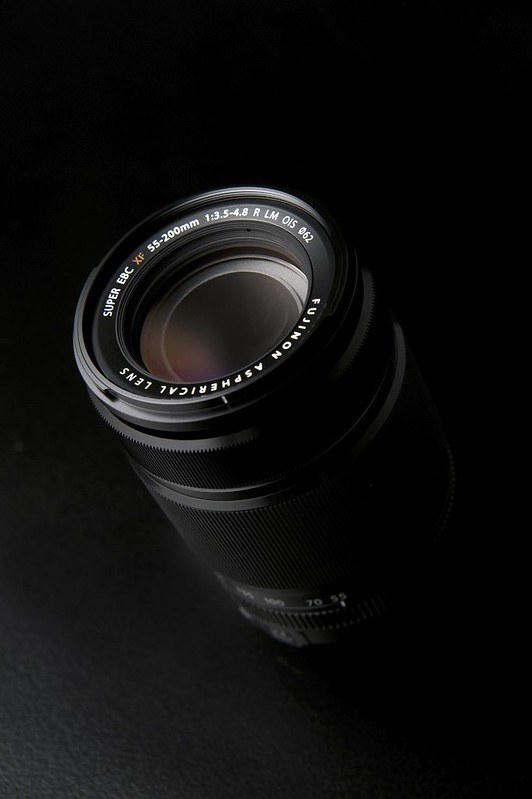
The telephoto zoom’s full name is FUJINON XF55-200mmF3.5-4.8 R LM OIS, and it’s supposed to sell for USD 699.– (plus sales tax) in the U.S. or EUR 649.– (incl. VAT) here in Germany. I have been able to work with an early prototype of the lens for more than a week, so let’s have a closer look, shall we?
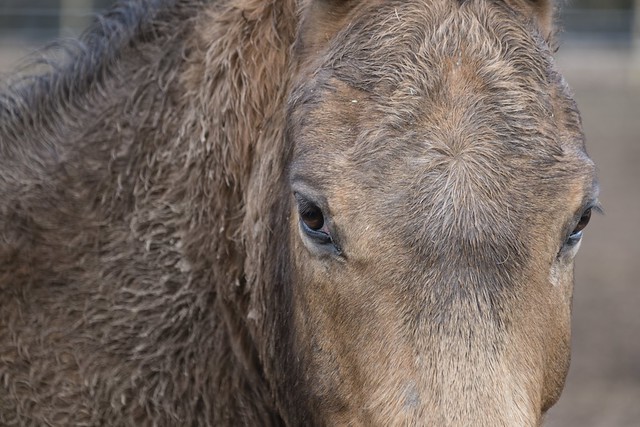
If you already know Fuji’s 18-55mm kit zoom lens, the new telephoto zoom will immediately feel familiar. It’s obvious that Fujifilm wants you to buy this zoom as an extension to your already existing standard zoom. Both lenses offer the same key features: a manual focus ring, an aperture ring without engravings, a zoom ring, an optical image stabilizer (OIS) and fast/silent linear autofocus motors. Everything is located in the same place: There’s one switch to turn the OIS on and off, and there’s another one to toggle the lens between automatic and manual aperture settings. Design, build quality and used materials appear to be quite similar, as well.
Would you like to know more about what all those letters and numbers in XF55-200mmF3.5-4.8 R LM OIS actually mean? If that’s the case, you may want to read my article Decoding XF18-55mmF2.8-4 R LM OIS here on Fujirumors. Pretty much all information on the kit zoom lens is also applicable to the new telephoto lens.
